I took a chance on the Viewbox from Evomade when experimenting with other mid-range virtual reality glasses made it obvious that weight would be a major issue for me. As inconsequential as 10 or 14 ounces looks on paper, it feels like 10 pounds when bearing the brunt of it on the bridge of my nose and cheekbones.
Even though the company is based in Sweden, it took just a week for the headset to arrive at my house in Colorado. When I contacted the company for a shipping update, they responded in just a few hours, so they have good customer service.
Right out of the box, the Viewbox weighs only 4.2 ounces, so I was already liking it more than my previous headsets. It also didn’t smell as offensive as I feared when I heard it referred to repeatedly as “wetsuit material” — my partner has a wetsuit and it doesn’t smell good or subtle.
Some assembly required
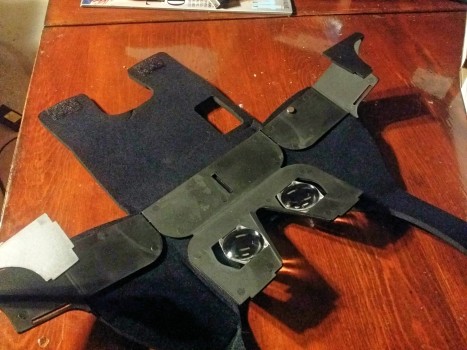
However, I still needed to assemble it. It comes all folded up, handy for shipping, but the sheet of instructions for pulling it together puts IKEA manuals to shame with its unhelpful minimalism.
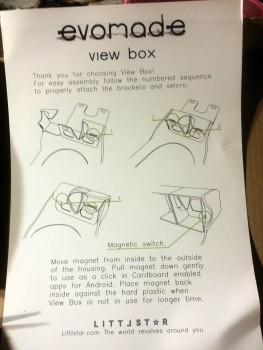
I abandoned the diagrams almost immediately and struck out on my own. Now that I can look back on the adventure, it seems fairly obvious how to do it, but seeing what needs to be done and doing it are two different things. The tabs, once seated, don’t want to stay seated, and putting pressure on one part of the structure is guaranteed to make another pop out. You almost need two people to accomplish it the first time.
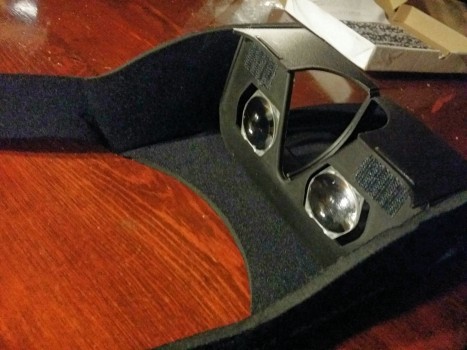
I found a blog tutorial that used a hot glue gun, which I thought excessive before holding this thing in my hands. Now I’m starting to agree.
You’re supposed to be able to fold it up again, but I don’t know that I’d dare. The folding joints are just thinner plastic, the kind that easily snaps in your bare hands if worked back and forth enough times.
Anyway, after a few minutes, the tabs seemed to cooperate slightly better after molding to my face, so I wouldn’t want to upset our uneasy truce.
Trying to get the phone in, it absolutely wouldn’t work with my very slim case on — I have a Galaxy Note 3. But once it was in, it helped to stabilize the whole structure and keep it stiffer in shape. Unfortunately, the phone tray doubles as the bottom of the glasses — it folds under and back up to form the panel that sits against your face. A little weird, and makes getting the phone in and out quite the production — and always with the fear of those insolent tabs giving up their seats again.
Nice view; good fit
The interpupillary distance — how far apart the lense are — is adjustable. But not easily adjustable, and not without taking the headset off, which makes deciding on a setting tricky if you can’t look through them while moving them. But I got there eventually. It also helped if I shifted the whole set higher or lower on my face.
Quite honestly, halfway through this ordeal I started wondering if the company would accept a return. They didn’t seem worth what I paid for them.
But once I got up and running, I changed my mind.
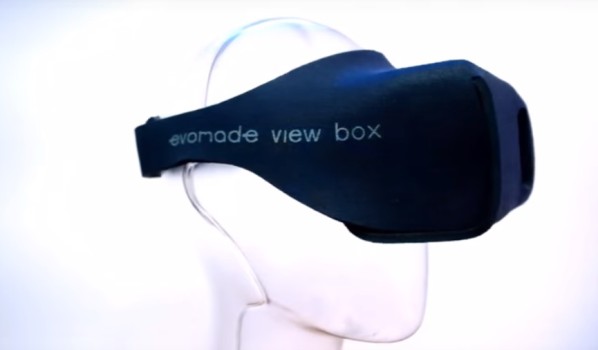
They claim that the design puts most of the weight on the forehead, and that’s true. In fact, these things don’t touch your nose at all — I couldn’t stop swiping my hand over the area in disbelief.
Definitely the most comfortable of the glasses I’ve tried. My only possible complaint is your face does sweat a bit where the fabric sits, but a small price to pay to lose all that weight on your nose. The two Velcro straps behind the head are much simpler to use and also help you feel less like your head is being crushed.
The field of view is also pretty impressive. I can see the edges of my phone, but just as a thin frame, not nearly the terrible “tunnel vision” that I’ve had before in cheaper sets. There’s no light leak.
There is no way to adjust the focal distance — how far away the lenses are from the phone screen — but it seems like the phone is closer to my face, and it looked clearer than on my previous sets, and definitely more immersive. I tried it with my two favorite apps, VRSE and VRideo, and could make out details I’d missed before.
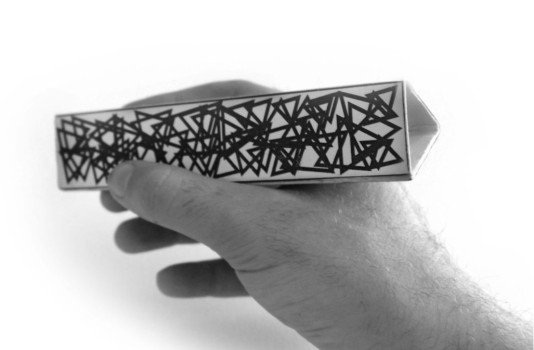
I haven’t played with the “ingot” pointing tool yet — I think it’s for playing in augmented reality — but I appreciate that it was included rather than needing to be printed, though it does have to be attached to cardboard by the user. According to the company, no apps currently support it but they’re working on it.
In summary, this is only a slightly fancier version of the standard cardboard headset, and time will tell how well it holds up to regular use. At $35, some might consider it too pricey for what it is, but for me the vastly improved comfort factor undoubtedly makes it worthwhile.
Official assembly video:
- Review: Viewbox light, but tricky to assemble - February 24, 2016
